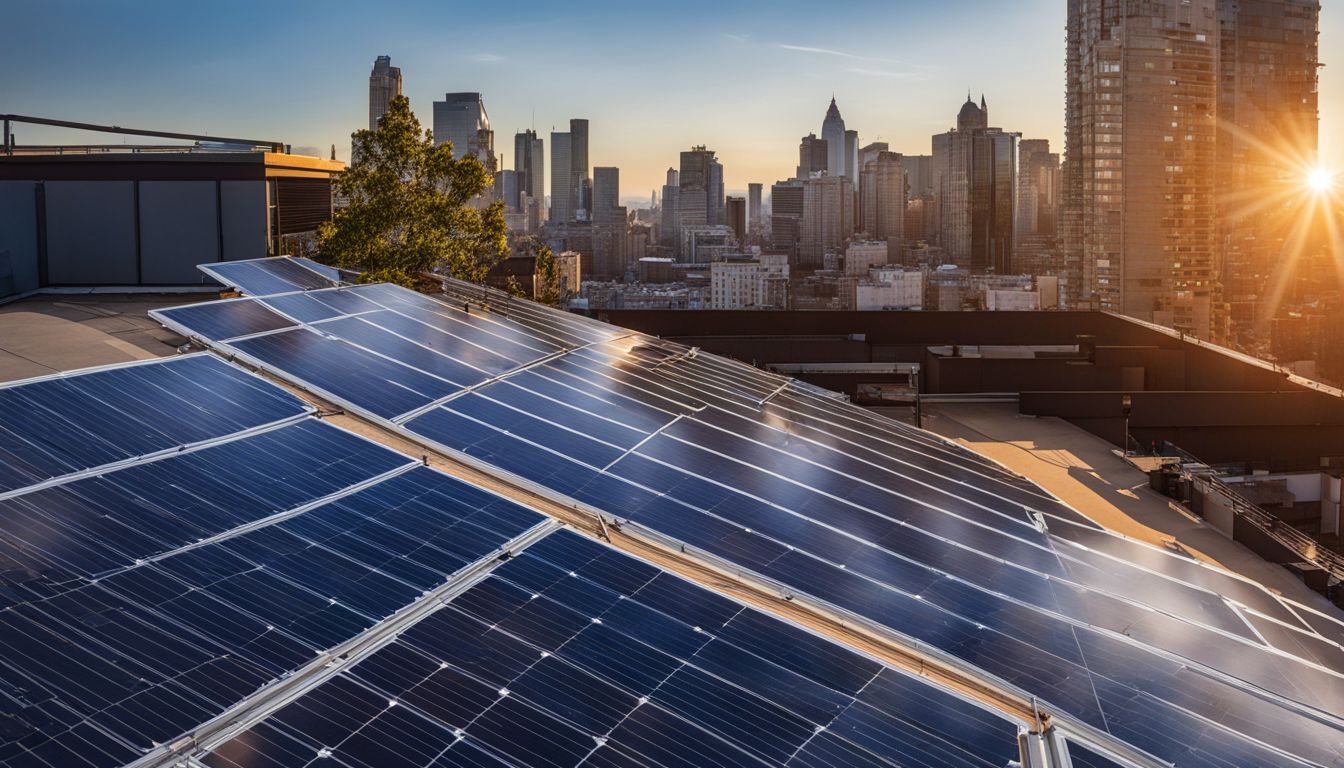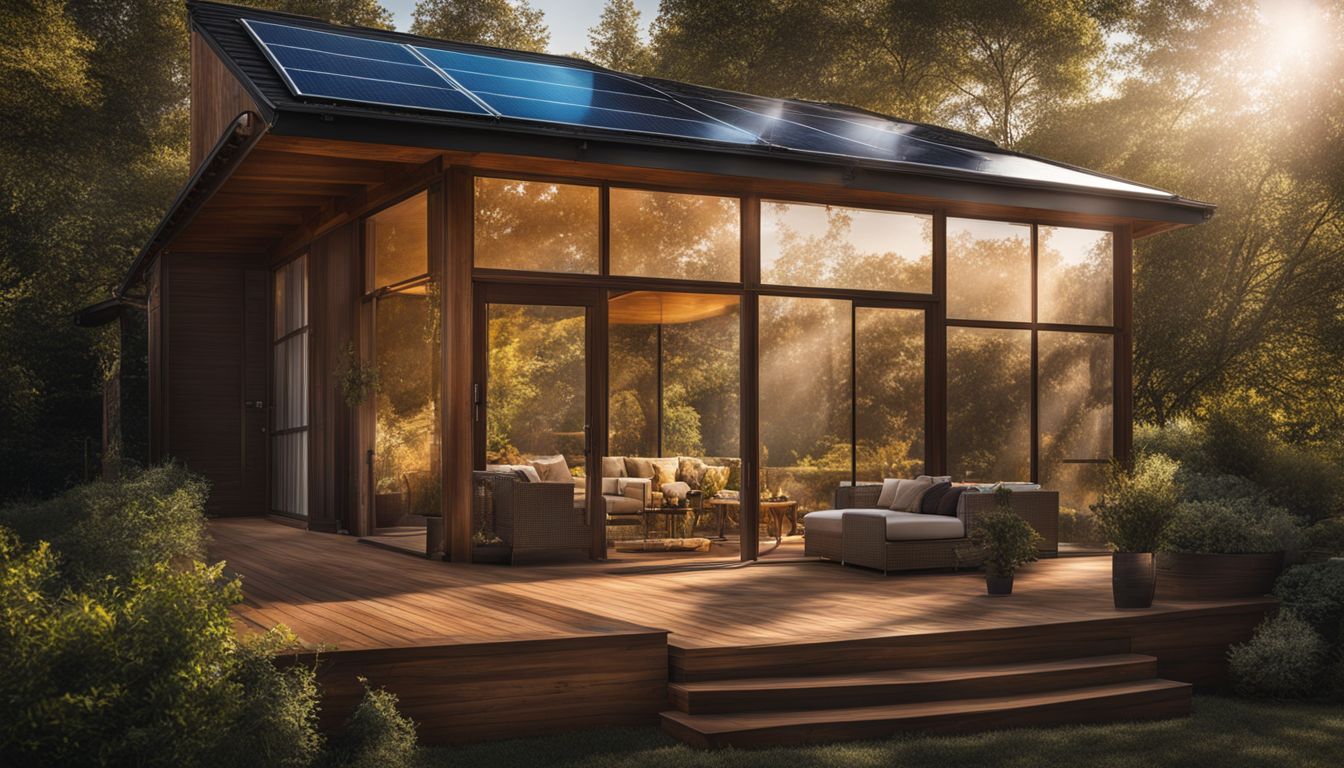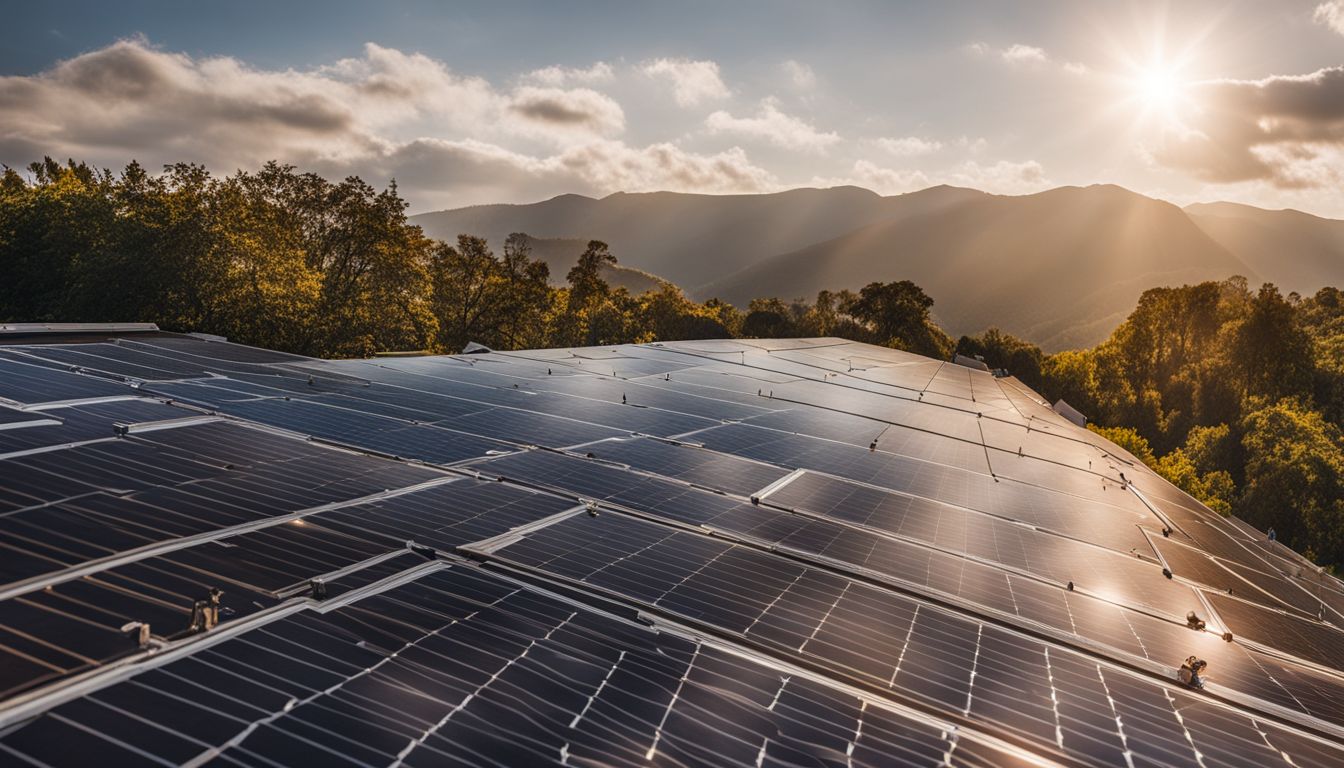
By: GreenFrontier Dispatch
Efficient Rooftop Solar Panels Installation: Harnessing Solar Power for a Sustainable Future
Imagine a world where every home draws its power from the sun. This dream is closer to reality than many think, thanks to efficient rooftop solar panel installations. With the right setup, homeowners can significantly cut down their electricity bills and contribute to a sustainable future.
However, the journey to harnessing solar power involves careful planning and understanding key considerations that ensure the success of such installations.
With over 20 years in alternative house design, I’ve guided countless projects towards eco-friendly solutions that blend innovation with respect for nature. From assessing sunlight exposure on your property to navigating local ordinances and tapping into government incentives—my experience covers the full spectrum of what it takes to go solar successfully.
Let’s explore how you can add this clean energy source to your home effectively. Ready? Let’s make your home part of a cleaner tomorrow.
Key Takeaways
- Check your electricity bill and sunlight exposure before installing solar panels. This helps decide the best system size and position for maximum energy production.
- Grounding the solar panel system is vital for safety. It prevents electric shock and fire hazards.
- Solar panel installation can be expensive, but government incentives like tax credits make it more affordable. The total cost drops after applying the Solar Investment Tax Credit (ITC).
- Hiring a certified solar installer is important. They ensure efficient, safe installation and help with long-term maintenance for the best performance.
- Even if your home isn’t suitable for rooftop solar panels, community solar projects offer another way to use renewable energy.
Considerations Before Installing Solar Panels

Before diving into solar panel installation, assess your electricity usage by reviewing your bill and evaluating sunlight exposure in the area. Understanding these factors will help you make an informed decision about harnessing solar power for a sustainable future.
Review of electricity bill
Looking at your electricity bill is the first step to install solar panels on your roof. Your bill shows how much power your home uses each month. This helps you figure out the size of solar system you need.
The goal is to make enough solar energy so you can pay less for electricity from the grid.
The more electricity you use, the bigger the benefit of adding solar.
After checking your monthly electricity usage, think about possible changes in future. Adding an electric car or a new room could increase your need for power. Your bill also has info about peak hours when using electricity costs more.
With this knowledge, installing a suitable solar setup becomes easier and more cost-effective.
Evaluation of sunlight exposure
Checking how much sun hits your roof is key to making solar panels work well. You want them to get plenty of light. This means looking at any shade from trees or buildings that might block the sun.
A good check ensures your panels will last and make lots of electricity over time.
Use tools like sunlight calculators or hire a pro to see if your house gets enough light. They can tell you the best spot for your panels. This step helps decide if adding solar on your roof is right for you, making sure it’s a smart move before you spend any money.
The Solar Panel Installation Process

The solar panel installation process involves mapping out wiring routes and grounding the system for optimal performance. It also requires careful consideration of sunlight exposure to maximize energy production.
Mapping out wiring routes
Mapping out wiring routes is key for a smooth rooftop solar installation. It makes sure your system connects right, works well, and lasts long. Here’s how to do it:
- Start with a plan of your roof. Look at where the sun hits it best. This helps you decide where to put your solar panels.
- Find the best path for wires from your panels to your home’s power system. Keep it short and straightforward to reduce energy loss.
- Use durable materials for wiring – this protects against weather and keeps energy flowing smoothly.
- Consider future troubleshooting. Design your system so you can easily find and fix any issues without disrupting the whole setup.
- Get advice from a pro. A certified solar installer can offer tips on the best routes that you might not think of on your own.
- Check local rules about solar installations in your area. Some places have specific guidelines for how and where you can run wiring.
A well-thought-out plan keeps your system efficient and safe, ensuring you get the most out of your solar investment for years to come.
Grounding the system
During the installation process, the solar panel system must be grounded to prevent electric shock and fire hazards. Here’s a comprehensive guide on how to ground the solar panel system:
- Use proper grounding equipment such as ground rods, clamps, and wires.
- Ensure that all metal components of the solar panel system are connected to the grounding electrode conductor.
- Conduct a resistance test to measure the effectiveness of the grounding.
- Install ground fault protection devices to detect any faults in the system and promptly interrupt the current flow.
- Regularly inspect and maintain the grounding system to ensure its continued effectiveness.
Ensuring proper grounding of the solar panel system is crucial for safety and efficiency, providing peace of mind for alternative house design enthusiasts seeking sustainable energy solutions.
Cost and Value of Solar Panel Installation
Installing solar panels can offer significant long-term cost savings. Government incentives and tax credits can further reduce the upfront costs, making solar panel installation a valuable investment in renewable energy.
Estimation and comparison of solar panel cost
Understanding the cost and value of installing solar panels on your home is key. Let’s break this down with some numbers and facts, keeping things straightforward and easy to grasp.
| Item | Details | Cost (Average) |
|---|---|---|
| Solar Panels and Equipment | Includes panels, inverters, mounting hardware | $10,000 – $18,000 |
| Installation | Labor costs for setting up the system | $3,000 – $5,000 |
| Permits and Inspection | Required by most local governments | $500 – $2,000 |
| Total Cost Before Incentives | Estimated total cost of solar system installation | $13,500 – $25,000 |
| Government Incentives | Solar Investment Tax Credit (ITC) for 2023 | 22% off total cost |
After applying the Solar Investment Tax Credit (ITC), the cost drops significantly. This makes solar panels a smart investment for your home. Different financing options are also available, easing the initial financial impact. These options include traditional loans, leasing, or agreeing to a power purchase agreement (PPA). States also offer programs to help households with varied incomes. In summary, while the upfront cost might seem high, the long-term savings and environmental benefits make solar panels an excellent choice for eco-conscious homeowners.
Government incentives
Transitioning from the upfront costs of solar panels, let’s delve into the incentives provided by the government to support solar installations. State and federal tax credits are available for residential solar photovoltaics, helping reduce overall installation expenses.
Additionally, community solar projects supported by local authorities provide opportunities to harness solar power as a collective effort – meaning you can still benefit even if your home isn’t suitable for solar panels.
By actively engaging in these programs, homeowners can tap into financial benefits that contribute towards a sustainable future while offsetting some of the initial investment in installing a residential rooftop solar system.
The Role of a Certified Solar Installer
Certified solar installers play a crucial role in ensuring the efficient and safe installation of rooftop solar panels. Their expertise, combined with rigorous training, supports the seamless execution of the installation process.
Moreover, their knowledge in electrical systems and industry regulations ensures that solar setups are not only functional but also comply with safety standards.
Solar installers help homeowners harness the power of renewable energy by carefully evaluating factors such as sunlight exposure, wiring routes, and system grounding. They work hand-in-hand with homeowners to bring sustainable energy sources to life while guaranteeing adherence to government incentives and cost-effective solutions.
Hiring professional solar installers offers peace of mind since they possess a deep understanding of photovoltaic technology and can provide long-term maintenance for optimal performance.
Conclusion
Harness the power of solar energy with efficient rooftop panel installation. Careful planning and consideration ensure a successful transition to sustainable living. Certified installers guide you through the process for safety and compliance.
Start your journey towards green living today!
FAQs
1. What should I consider before installing solar panels on my roof?
Before adding solar panels, think about your home’s energy efficiency, the amount of sunlight your roof gets, and whether your roof is in good shape or needs a new one. Also, check out state incentives and the federal tax credit for solar to save money.
2. Is it better to buy or lease solar panels from a solar company?
Well, buying or leasing depends on what you prefer. Buying means you own the system and could get more savings long-term. Leasing can lower up-front costs but may save less over time. Ask your solar provider for advice based on your situation.
3. Can homes with solar panels sell for more?
Yes! Studies by the National Renewable Energy Laboratory found that homes with rooftop installation often sell at a premium because buyers see them as upgrades that reduce future energy bills.
4. How much electricity can an average-sized solar array produce?
The power generated by an average-sized system varies but can significantly offset your energy bill—sometimes even covering all your needs if planned right! Your local installer can help determine how much electricity you could produce and save.
5. Do DIY Solar Panels make sense for everyone?
DIY Solar might seem like a way to cut costs, but it’s not right for everyone. You need some technical know-how and time—and remember, not all installations are eligible for incentives without certification from entities like the American Board of Certified Energy Practitioners.
6. How does community solar work if I can’t install panels on my roof?
Community Solar allows people who rent or have shaded roofs to still save with solar by subscribing to a shared local energy project where electricity produced goes back into the grid—and subscribers get credit on their electric bills! It’s great if rooftop installation isn’t an option.